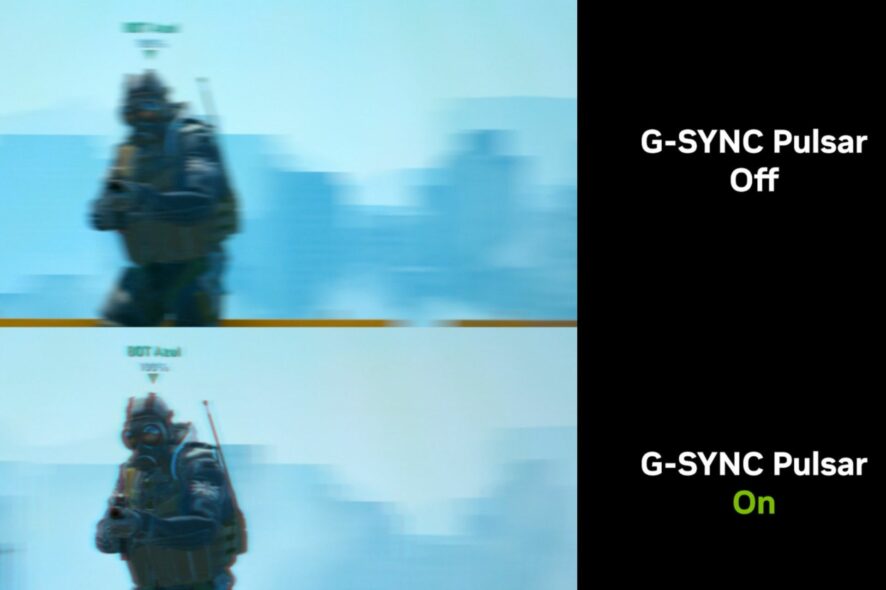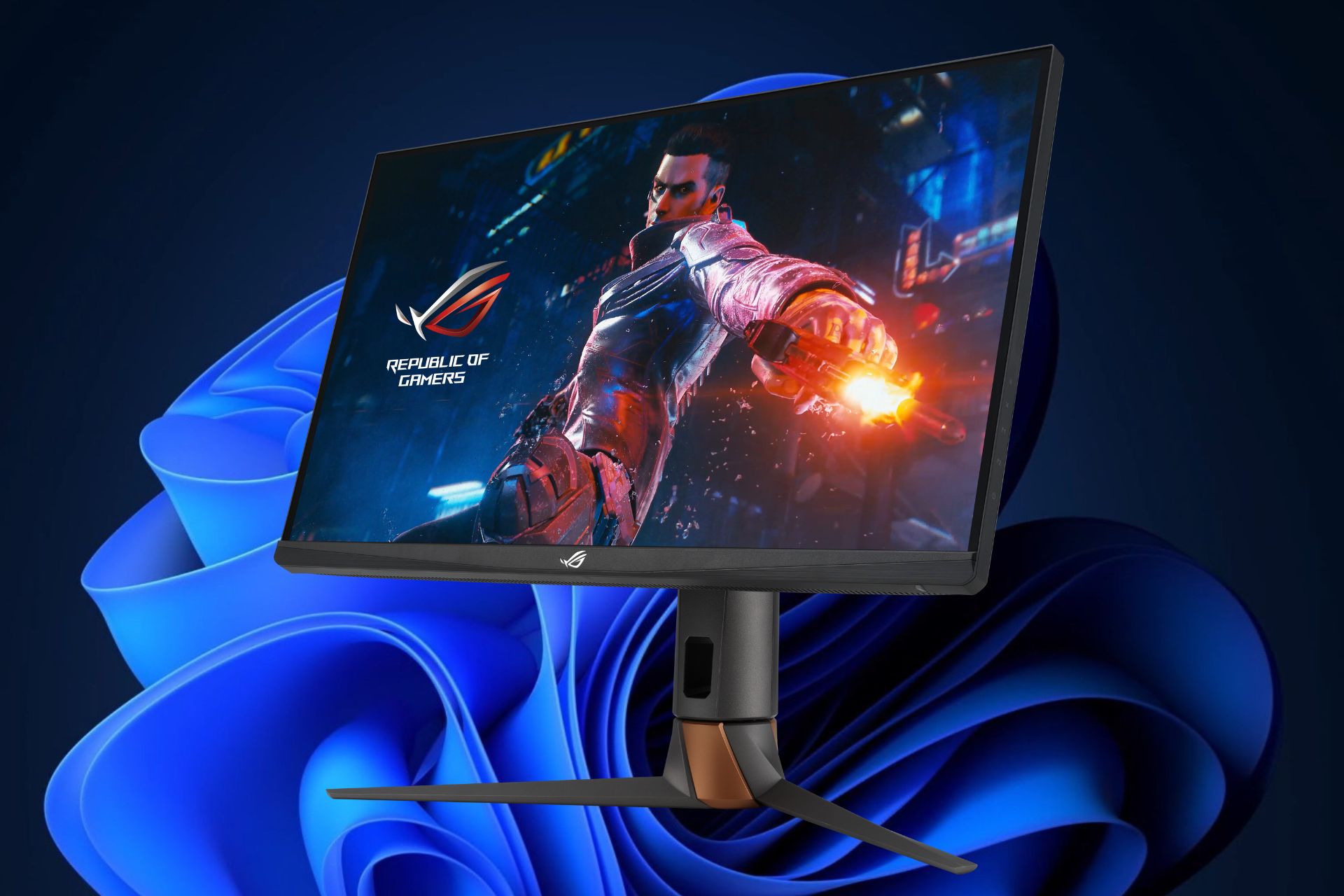The new G-SYNC Pulsar technology is a huge advantage in competitive gaming, NVIDIA says
The technology is labeled as groundbreaking.
4 min. read
Published on
Read our disclosure page to find out how can you help Windows Report sustain the editorial team Read more

CES 2024 is currently taking place in Las Vegas, and among the announcements, NVIDIA released its new gaming-oriented technology called G-SYNC Pulsar, which promises stutter-free gaming experiences on NVIDIA graphic cards.
The new G-SYNC Pulsar technology will be integrated into new G-SYNC monitors, including the ASUS ROG Swift PG27 Series G-SYNC gaming monitor, all coming later this year.
G-SYNC Pulsar is the next evolution of Variable Refresh Rate (VRR) technology, not only delivering a stutter-free experience and buttery smooth motion, but also a new gold standard for visual clarity and fidelity through the invention of variable frequency strobing. This boosts effective motion clarity to over 1000Hz on the debut ASUS ROG Swift PG27 Series G-SYNC gaming monitor, launching later this year.
NVIDIA
Those devices that are equipped with NIVIDA graphic cards will be able to make use of the new technology to provide PC gamers with a consistent and comfortable viewing experience, according to the press release.
NVIDIA has also shown a demo of the gaming session with and without the G-SYNC Pulsar technology, which you can see below. The differences are noticeable.
G-SYNC Pulsar: How does it work?
According to NVIDIA, the technology makes use of two elements: Adaptive Overdrive and Pulse Modulation.
The Adaptive Overdrive, G-Sync Pulsar adjusts the rate of each pixel transitioning from one color to another, greatly reducing motion blur and ghosting.
With Adaptive Overdrive, G-SYNC Pulsar dynamically adjusts the rate at which pixels transition from one color to another, a vital technique to reduce motion blur and ghosting. This process is complicated by VRR technology, where the refresh rate fluctuates in tandem with the GPU’s output. G-SYNC Pulsar’s solution modulates overdrive based on both screen location and refresh rate—ensuring that clarity and blur reduction are maintained across a spectrum of speeds, and across the entire screen space.
NVIDIA
Pulse Modulation controls the display’s brightness and duration, which effectively provides visual comfort and eliminates flickering.
Complementing this, the technology also intelligently controls the pulse’s brightness and duration—key to maintaining visual comfort and eliminating flicker. Flickering, often a byproduct of strobing methods used to diminish motion blur, can disrupt the gaming experience and cause viewer discomfort. By adaptively tuning backlight pulses in response to the constantly changing game render rate, G-SYNC Pulsar creates a consistent and comfortable viewing experience, effectively accommodating the display’s dynamic nature.
NVIDIA
NVIDIA says the new G-SYNC Pulsar technology offers huge advantages in competitive gaming, by reducing by eliminating stuttering, something that can prove to be the difference between the winning team and the losing one.
The technology also offers far more visual clarity, something that can also be incredibly useful when intending to win a gaming match.
In competitive gaming, the elimination of stuttering is crucial, as these distractions can impede performance and affect outcomes. Similarly, enhanced motion clarity can provide a competitive edge, where precise tracking and response to fast-moving elements and friend-foe distinction are paramount.
NVIDIA
For those gamers who are more interested in immersing into the game lore, the G-SYNC Pulsar technology will offer them the means to do so, by providing them with a higher graphical detail, emphasizing immersion all around.
For immersive games, the technology’s ability to maintain consistent smoothness and clarity enhances the player’s sense of being part of the game world, free from immersion-breaking visual artifacts.
NVIDIA
The technology will make its way to monitors designed for it later this year, such as the ASUS ROG Swift PG27 Series G-SYNC gaming monitor. To be able to enjoy this groundbreaking technology, your device should be equipped with an NVIDIA graphic card, as well.
What are your thoughts on this?









